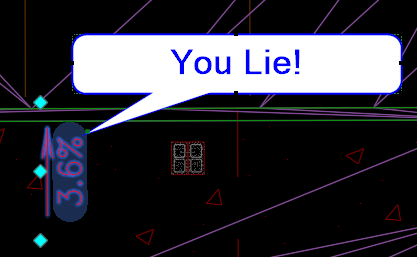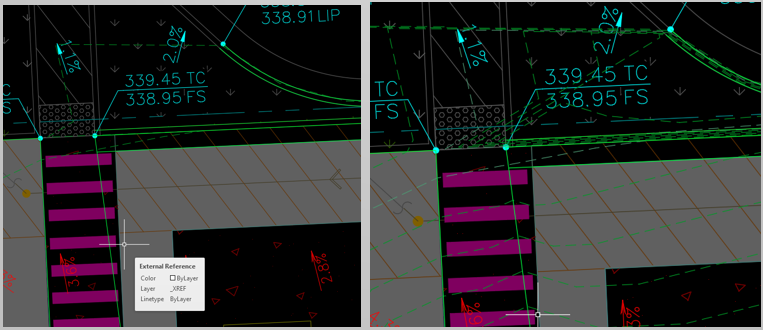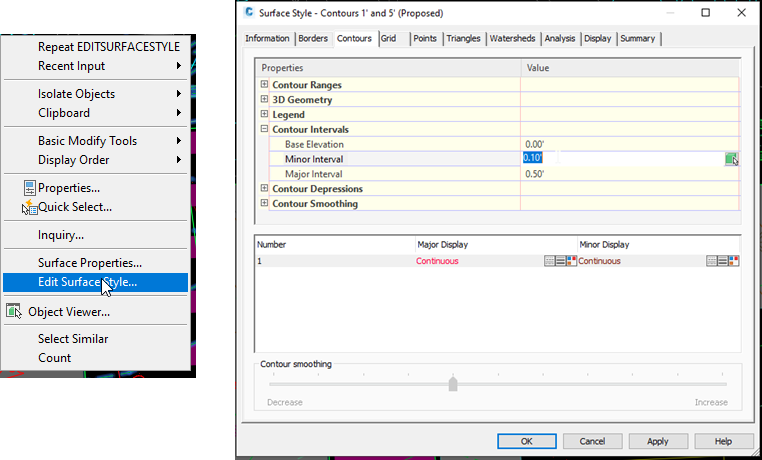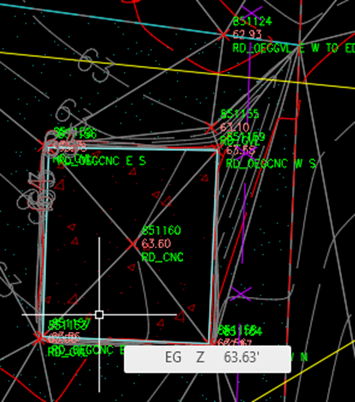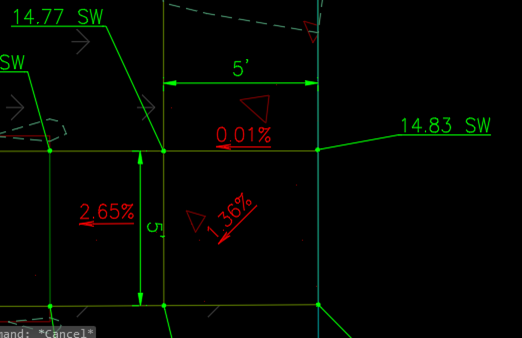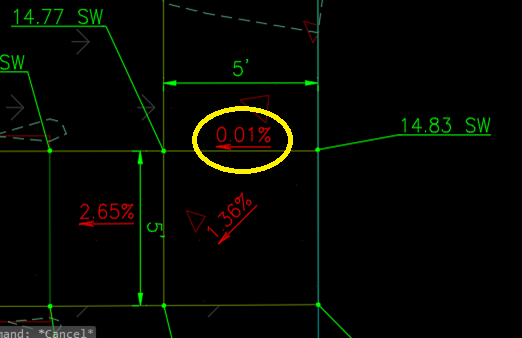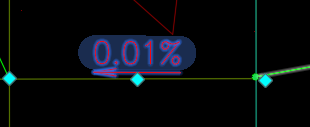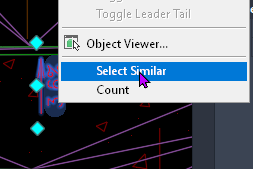I often see users new to grading with Civil 3d make the same errors reviewing surfaces. Here we are going to continue our series and show you a few shortcuts to help you review surfaces faster.

I see this often with new users, they want to check the grades, and do it by copying a grade label all over the place. To review these they need to review each number. Lets supercharge this and talk about surface analysis!
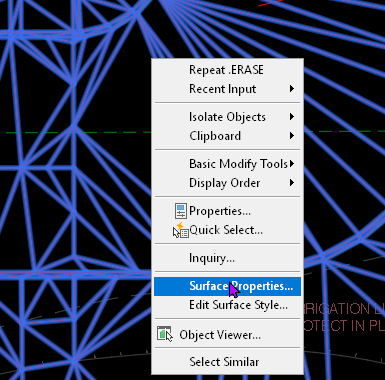
Select the surface, right click and select Surface Properties.
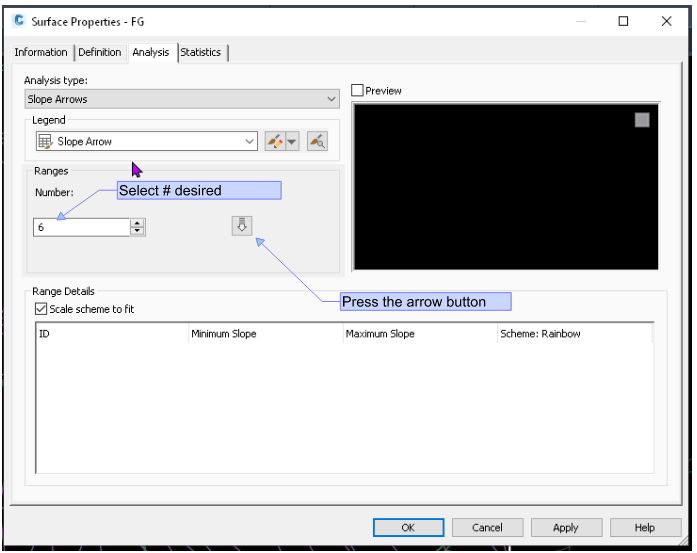
Setup the desired # of surface analysis. I usually use this scheme:

I usually do this for the following reasons. I want to flag any slope under 0.50% as too flat to drain. Often I may want to increase this range. 0.50-1.50% I also want to check out. 1.5%-2% is flagged so we can check for any issues with ADA cross-slope. 2-8.33% is acceptable for ADA longitudinally. 50%+ I want to check for any too-steep slopes.
To get these to display, edit your surface style and make sure Slope Arrows is on (visible).
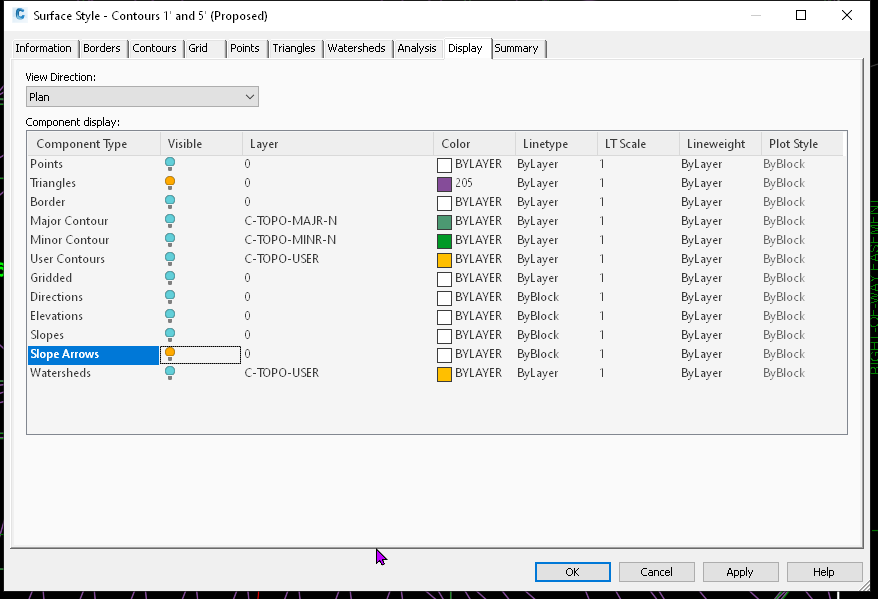
Now I can review my surface slopes by looking at the surface.
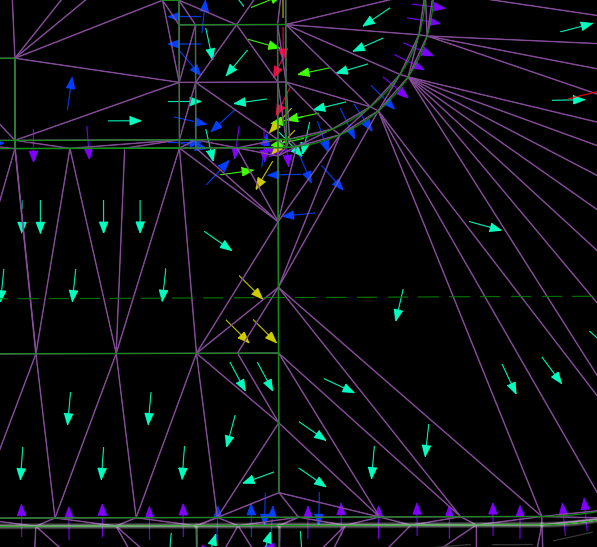
One issue you can have is the slope arrows are too/big or small.
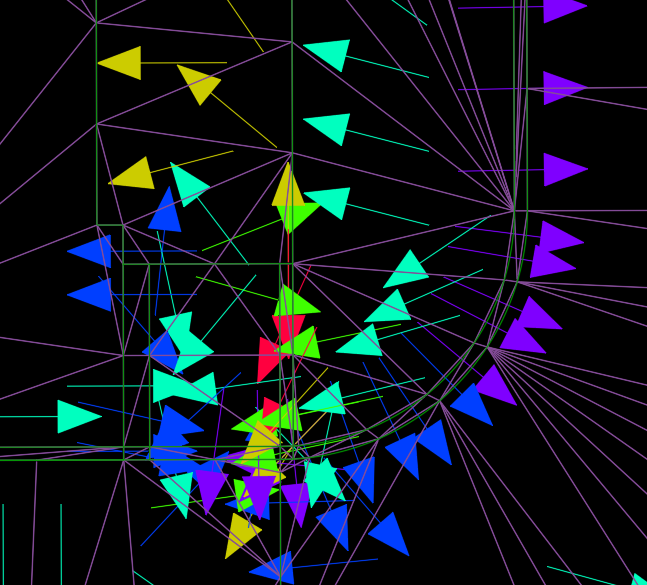
You can change the size of the slope arrow by editing the style.
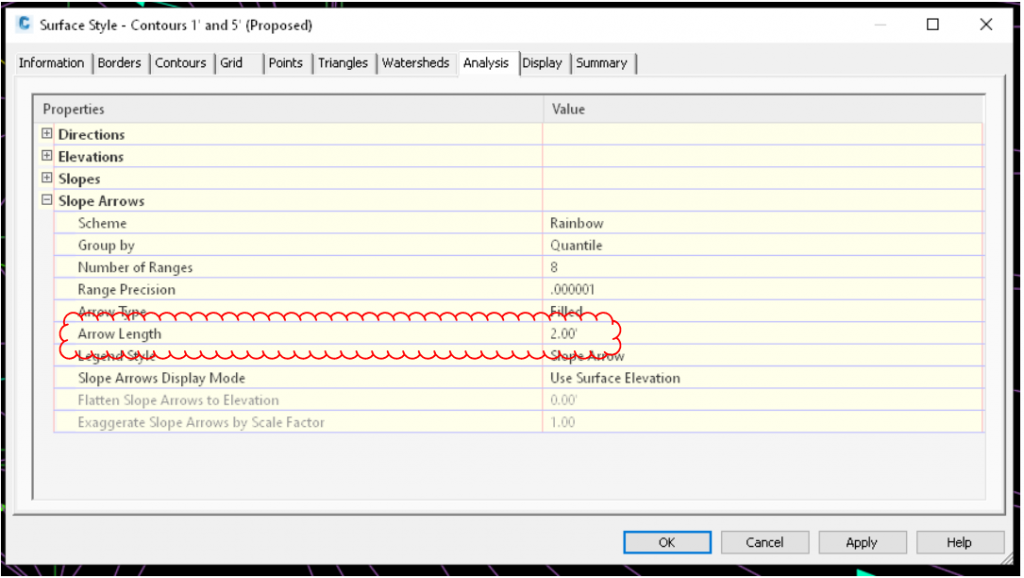
Adjust the slope arrow length as needed.
If you are printing this for review by your team, you can add a surface legend table
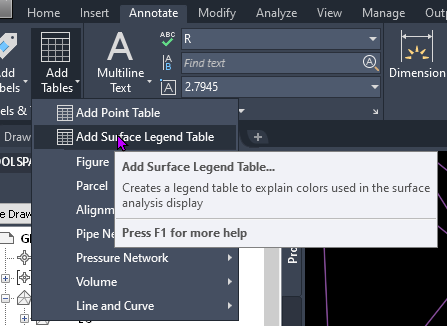

After selecting ‘Add Surface Legend Table’ and selecting your surface, it will ask what type of table you need. Select A for Slope Arrows. It will ask if you want a dynamic or static table.

Tin Lines Make Sense out of Chaos.
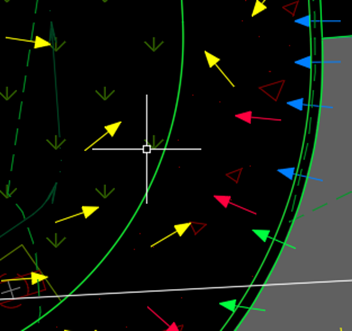
When reviewing the slope arrows, sometimes making sense out of them can be difficult. Turning on the tin lines helps make sense out of chaos.
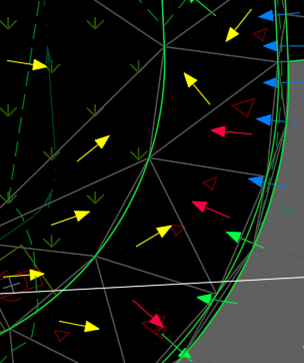
This will conclude part 2 of this series. I will post part 3 sometime after Autodesk University in New Orleans. Hope to see you there.
To read part 1, visit this link: http://c3dk.com/2022/09/06/techniques-for-reviewing-civil-3d-surfaces-part-1/

